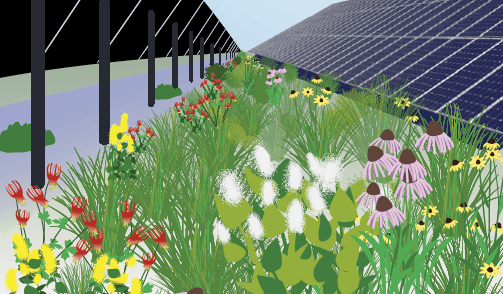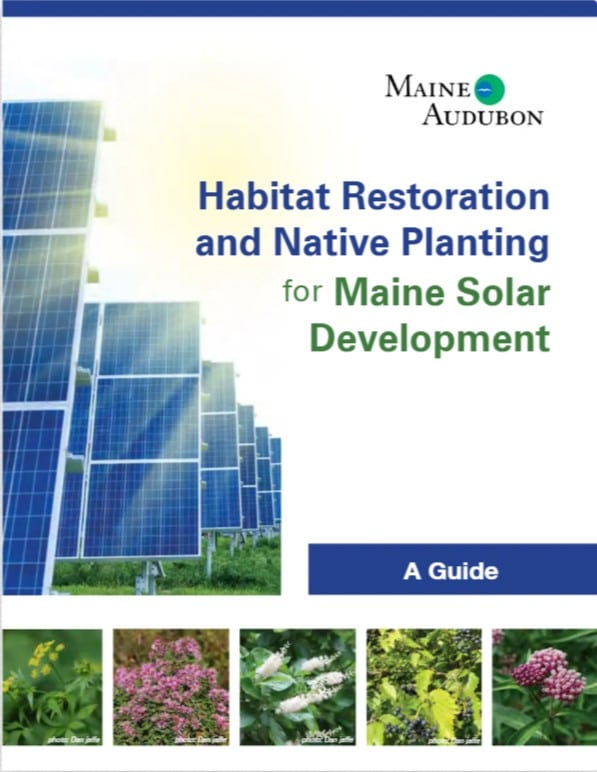
Thanks in large part to incentives put in place by Governor Mills in 2019, clean, renewable solar energy is cropping up all across Maine. From fewer than 100 MW of solar energy on the ground in Maine in 2019, there are more than 525 MW installed today. Maine is on track to meet its clean energy goals. But Maine Audubon knows that solar development potentially conflicts with wildlife habitat and natural resources. Like any new land use or development, if solar is not thoughtfully sited and operated, it could displace wildlife habitat and otherwise unduly impact Maine’s natural resources.
Maine Audubon has produced a number of documents to help avoid, reduce, and mitigate potential habitat impacts from solar development, all part of our Solar Toolkit. Documents include a GIS-based Renewable Energy Siting Tool; a Best Practices document; FAQ; and Model Site Plan Regulations and Conditional Use Permits.
This August we’ve released our newest addition to the Solar Toolkit: Habitat Restoration and Native Planting for Maine Solar Development. Written by Maine Audubon with review and input from RS Leonard Landscape Architecture, ReVision Energy, Pierson Nurseries, and ecologist Adam Kohl, and illustrated by Rebecca Hoskins, the guide is an invaluable resource for developers, landscape architects, and individuals pursuing solar development with habitat in mind.
The guide is aimed at maximizing the benefits to wildlife and wildlife habitat from ground-mounted solar development by encouraging the planting of native plants and through site-specific design and management. Maine Audubon’s Bringing Nature Home initiative emphasizes the importance of native plants to native insects that can then in turn become food for birds and other wildlife. Planting native plants in and around solar arrays has the potential to create thriving and beneficial wildlife communities.
The guide includes information on all aspects of solar vegetation management, including sourcing, siting, and caring for native plants. Taller native plants like viburnum and serviceberry are recommended to create aesthetic buffers around arrays, while plants like native beardtongues and milkweeds are recommended to include on the ground in and around the panels. The guide includes advice on mowing, pest management, fencing, and other practical issues.
Our Habitat Restoration and Native Plantings for Solar Development guide continues Maine Audubon’s commitment to finding effective and efficient ways to promote the growth of renewable energy development in Maine while also ensuring that our wildlife and wildlife habitat thrive.

